Abstract
The pooled results are presented of two North American surveys concerning spontaneous fetal deaths of conceptuses with cytogenetic abnormalities diagnosed prenatally whose mothers had declined elective abortion. The rate of fetal death of those with nonmosaic genotypes associated with Down syndrome was 30.1% (95% confidence interval of 19.0%–42.0%), which is almost identical with the difference of 30% previously estimated between rates observed at amniocentesis and in live births. The fetal death rate for (nonmosaic) 47,+18 was 68.0% (95% confidence interval of 46.5%–85.1%), close to the estimated difference of 75% between rates at amniocentesis and in live births for this genotype. For other nonmosaic genotypes, the rates (and 95% confidence intervals) were: 47,+13, 42.9% (9.9%–81.6%); 47,XXX, 0% (0%–9.0%); 47,XXY, 8.1% (0.8%–11.0%); 47,XYY, 3.0% (.08%–15.8%); for balanced translocations and inversions, 2.8% (0.3%–9.8%); and for markers, variants, and fragments, 0% (0%–12.8%). For 45,X, the rate was 75.0% (42.8%–94.5%), in contrast to the rate for 46,XX/45,X of 10.5% (1.3%–33.1%) and for structural X abnormalities associated with Turner syndrome of 0% (0%–60.2%). The rate for nonmosaic 45,X is significantly different from that for either of the other two categories associated with Turner syndrome. The maternal age of nonmosaic 47,+21 fetuses that survived to live birth was 39.1 ± 6.2, not significantly different from the rate for fetal deaths: 39.5 ± 3.8. The observations provide no support for opposing hypotheses by other groups that maternal age is positively or negatively associated with fetal death of 47,+21 conceptuses. For other chromosome abnormalities, maternal ages of fetal deaths are slightly lower than for live births, but none of the differences are significant. The rates of spontaneous fetal deaths derived here are likely to be pertinent to genetic counseling. Their use in adjusting the rates of abnormalities diagnosed at amniocentesis will enable derivation of predicted contemporary live-birth prevalence rates of abnormalities that would be observed in absence of selective abortion.
Full text
PDF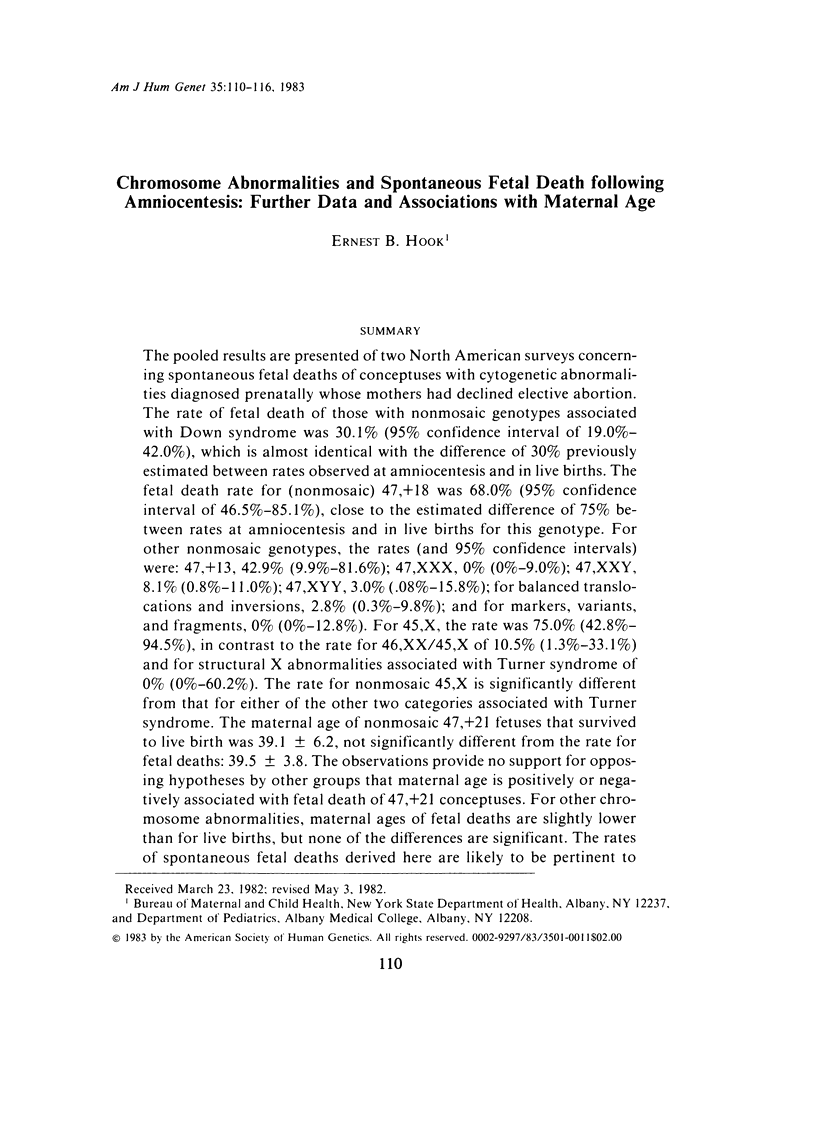
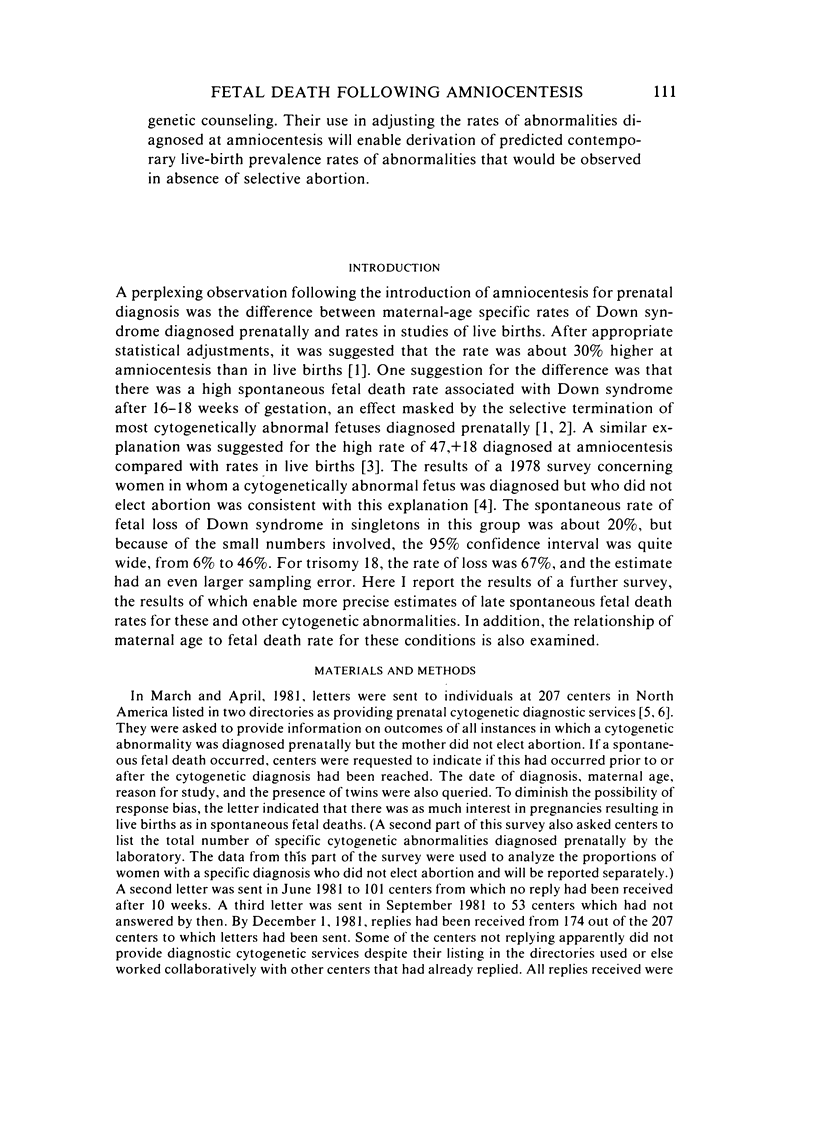
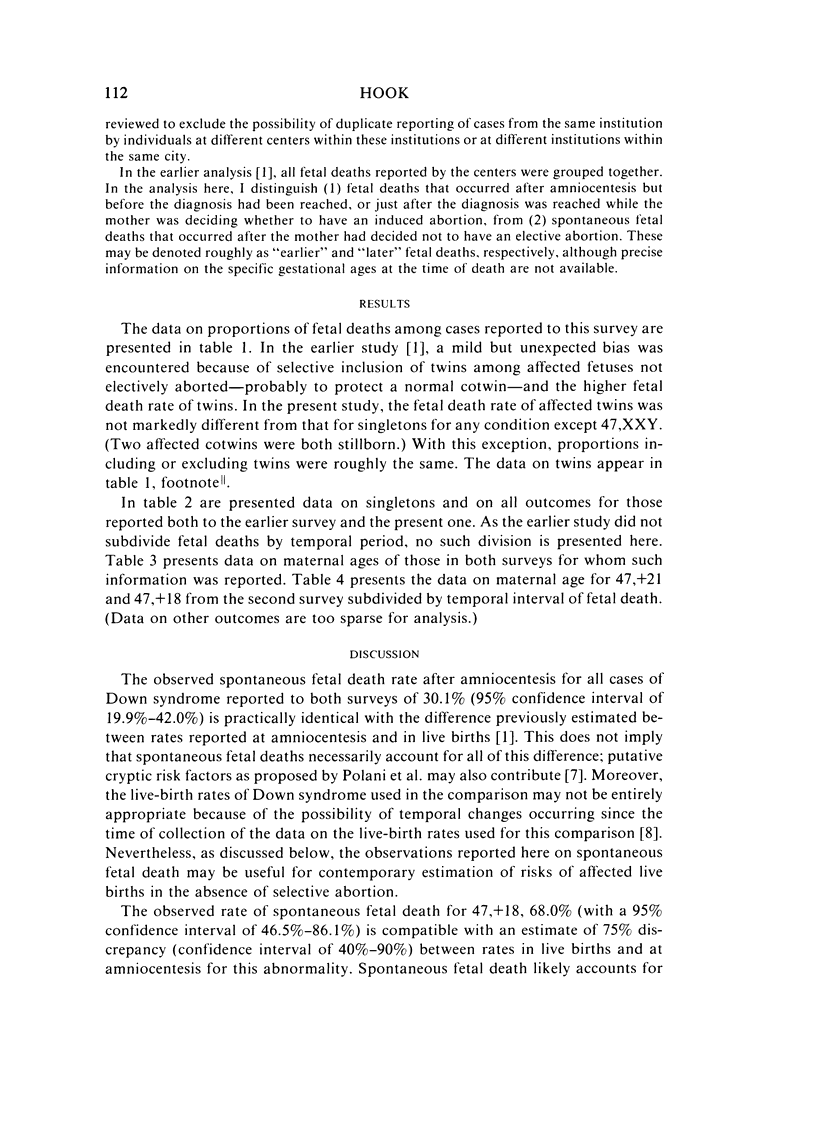
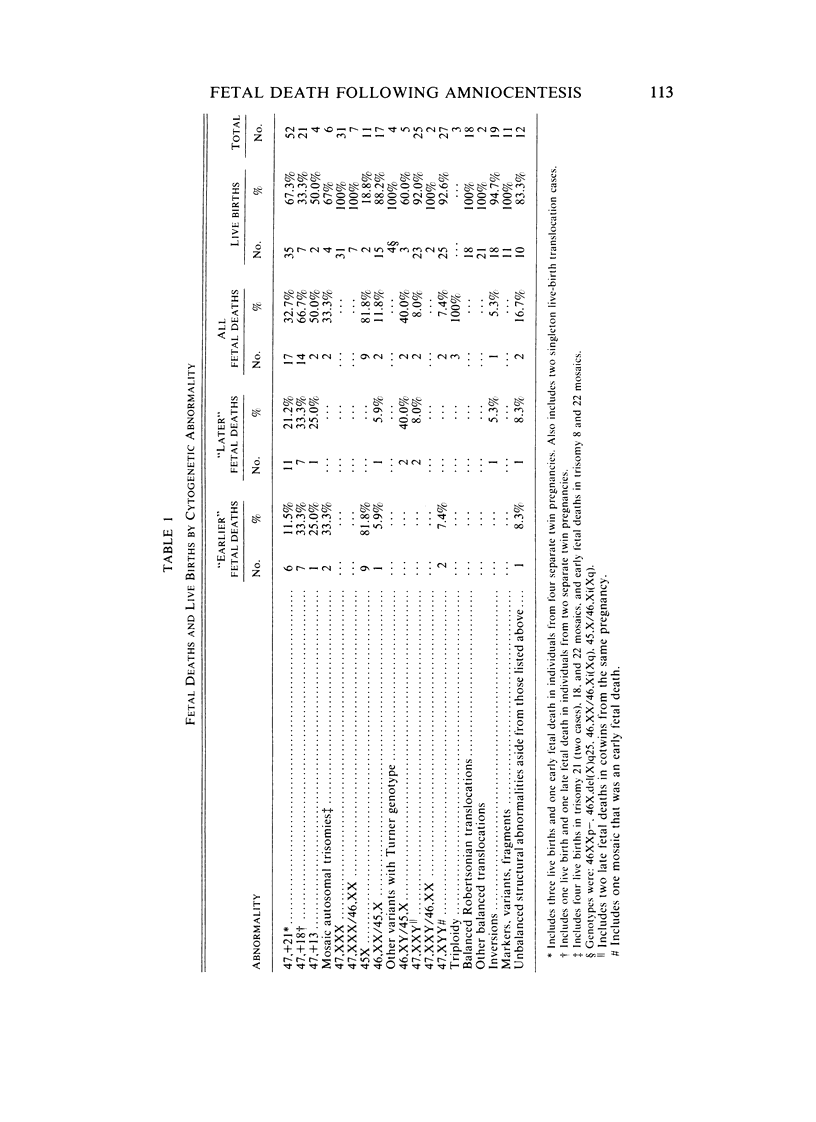


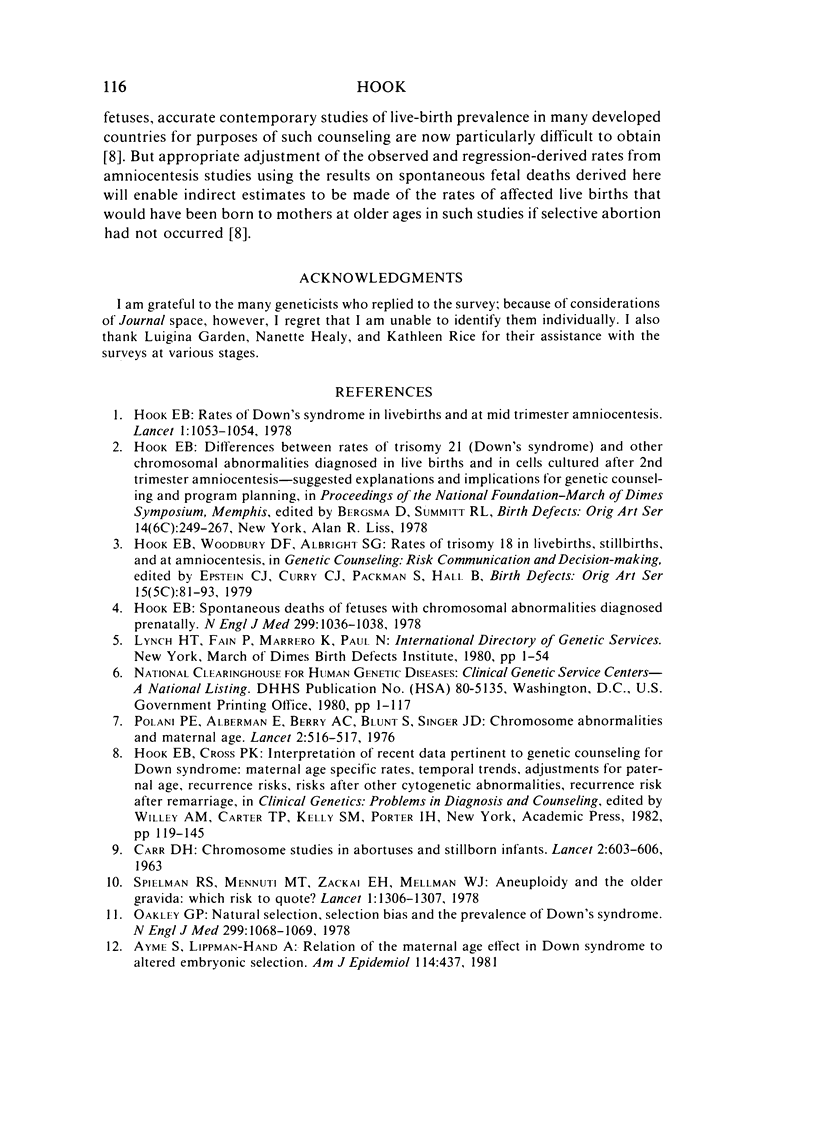
Selected References
These references are in PubMed. This may not be the complete list of references from this article.
- CARR D. H. CHROMOSOME STUDIES IN ABORTUSES AND STILLBORN INFANTS. Lancet. 1963 Sep 21;2(7308):603–606. doi: 10.1016/s0140-6736(63)90396-9. [DOI] [PubMed] [Google Scholar]
- Hook E. B. Differences between rates of trisomy 21 (Down syndrome) and other chromosomal abnormalities diagnosed in livebirths and in cells cultured after second-trimester amniocentesis--suggested explanations and implications for genetic counseling and program planning. Birth Defects Orig Artic Ser. 1978;14(6C):249–267. [PubMed] [Google Scholar]
- Hook E. B. Rates of Down's syndrome in live births and at midtrimester amniocentesis. Lancet. 1978 May 13;1(8072):1053–1054. doi: 10.1016/s0140-6736(78)90787-0. [DOI] [PubMed] [Google Scholar]
- Hook E. B. Spontaneous deaths of fetuses with chromosomal abnormalities diagnosed prenatally. N Engl J Med. 1978 Nov 9;299(19):1036–1038. doi: 10.1056/NEJM197811092991903. [DOI] [PubMed] [Google Scholar]
- Oakley G. P., Jr Natural selection, selection bias and the prevalence of Down's syndrome. N Engl J Med. 1978 Nov 9;299(19):1068–1069. doi: 10.1056/NEJM197811092991911. [DOI] [PubMed] [Google Scholar]
- Polani P. E., Alberman E., Berry A. C., Blunt S., Singer J. D. Chromosome abnormalities and maternal age. Lancet. 1976 Sep 4;1(7984):516–517. doi: 10.1016/s0140-6736(76)90806-0. [DOI] [PubMed] [Google Scholar]


